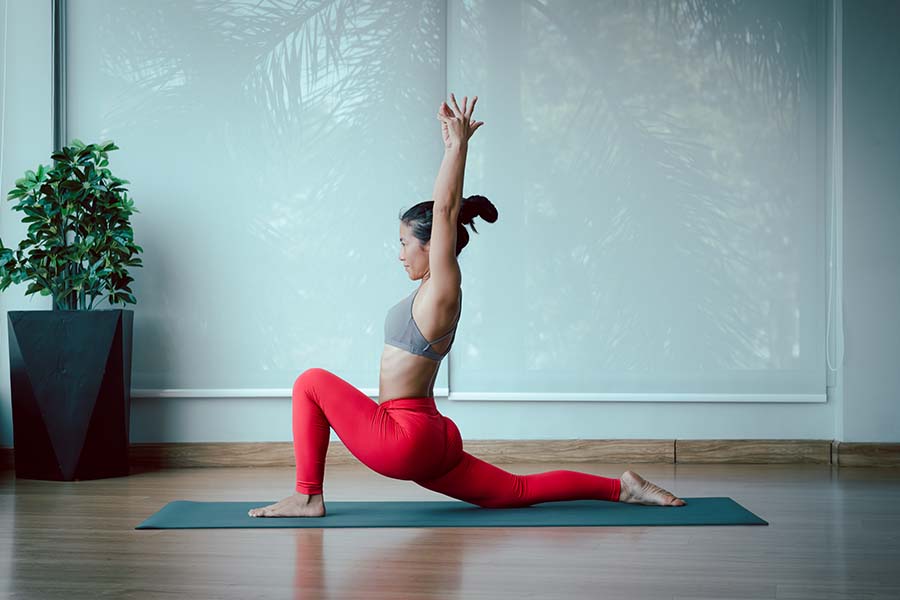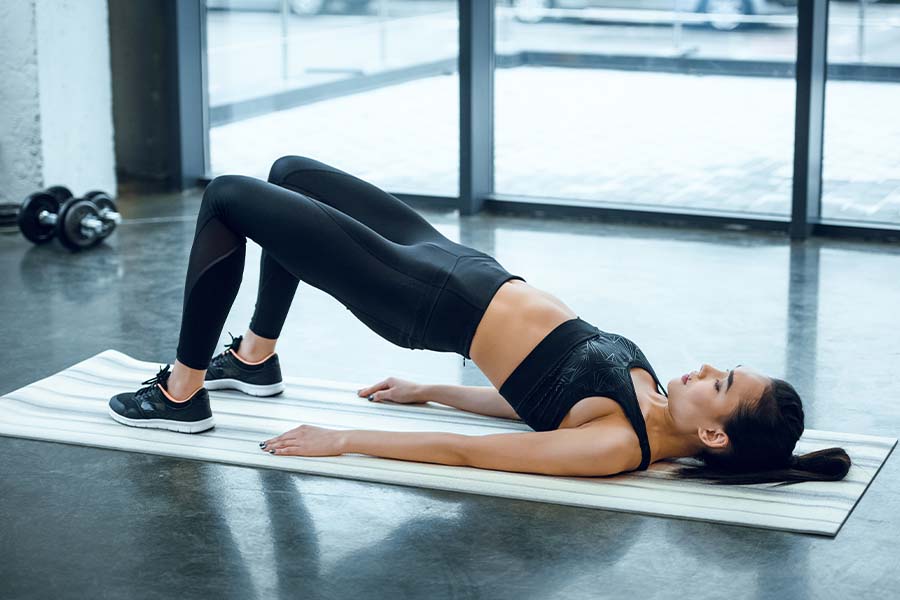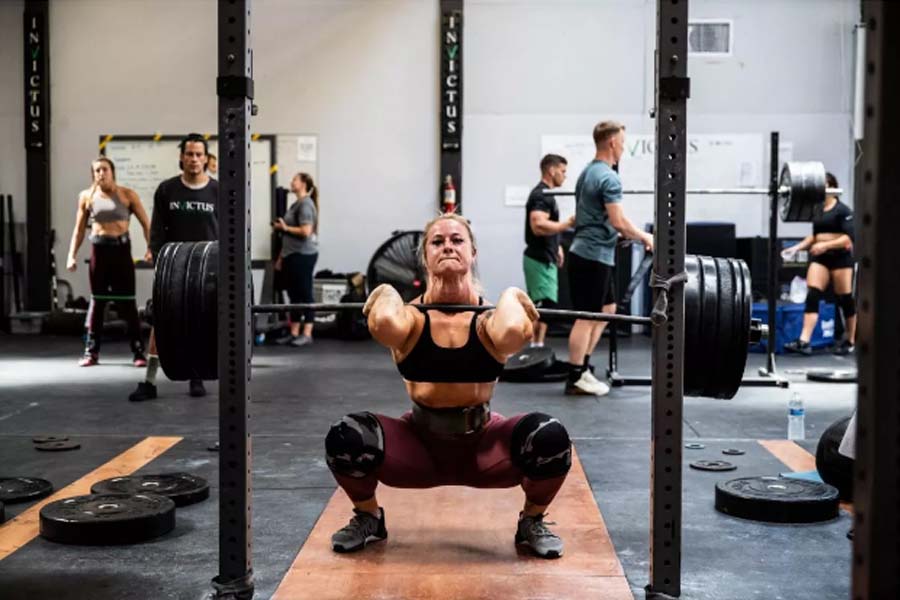Hey there, have you heard of the iliacus muscle? So glad you decided to drop by and learn more about it! One of the muscles you don't hear about as often is the iliacus muscle - and if that doesn't sound familiar to you, don't worry - we're here to help!
You may not have heard of it before, but trust us - this often neglected muscle aids in many of our daily activities. I mean, even its name is hard to pronounce! This little muscle powerhouse packs a punch for maintaining physical health and mobility.
So come on! Let's look at what it does, why it's an essential part of our body, and what it does- because underneath all its quietness, the iliacus muscle has some crazy superpowers you might be surprised about!
Related Article: Plantar Fasciitis: 10 Tips for Runners With Plantar Fasciitis
What Is the Function of the Iliacus Muscle?
The iliacus and psoas major muscles work together to flex the hip and are collectively called the iliopsoas. These muscles are crucial in providing hip flexion and stabilizing the lower back.
They are considered the most powerful muscle in the hip flexor group, enabling the movement and propulsion of the legs forward. While lying on your back, the iliopsoas maintains the straightness of your torso.
The iliacus muscle in the abdomen rotates and flexes the femur during walking. However, tightness in the iliacus and psoas can lead to problems in the back and hip, emphasizing the importance of keeping these muscles strong and healthy for functional fitness purposes.
Causes of Iliacus Muscle Weakness
Most of us are unaware of the bad habits in our daily routines that cause these problems and weakness in the iliacus muscle. So, here are several potential causes of iliacus muscle weakness
Poor Posture
The muscle can become overstretched and weakened when the body is slouched or hunched for extended periods. Similarly, when the body is unevenly stressed, such as when sitting cross-legged or with one leg tucked under the body, the iliacus muscle can become strained and weakened.
Poor posture can also affect the alignment of the pelvis, leading to imbalances and further weakness in the iliacus muscle. Maintaining good posture, taking breaks from prolonged sitting or standing, and adding Multi-Vitamin Supplements to your diet to prevent iliacus muscle weakness and other muscle imbalances are vital.
Muscle Imbalance
This occurs when uneven muscle stress is due to overuse or underuse of other muscles in the hip and thigh region. For example, if the quadriceps muscles are overused while the hip flexor muscles, such as the iliacus, are underused, this can create imbalances that result in iliacus muscle weakness.
Similarly, if a person has a dominant side that they consistently rely on for movement or exercise, the iliacus muscle on the non-dominant side may become weak and atrophied.
Engaging in exercises that promote balanced muscle development and taking EAA Hydration Supplements is vital to prevent iliacus muscle weakness due to imbalances and promote muscle building and recovery.
Trauma
Trauma can also be a cause of iliacus muscle weakness. Sudden impact, overuse, and repetitive strain injuries can all damage the iliacus muscle, resulting in weakness. For example, if a person falls and lands on their hip, they may experience a bruise or strain of the iliacus muscle.
Similarly, if a person engages in repetitive activities such as kicking or sprinting, they may develop an overuse injury in the iliacus muscle.
It is essential to rest, allow the muscle to heal if an injury occurs, and gradually return to physical activity to eliminate the risks of the weakness of the iliacus muscle. In such cases, it is recommended to take Post Workout Supplements for quicker recovery and better gains.
Inactivity
Inactivity is another cause of iliacus muscle weakness. When a person is inactive and does not engage in physical activity, the iliacus muscle can become weak and atrophied due to lack of use.
This can occur from extended periods of sitting or lying down, which can cause the muscle to shorten and weaken. In addition, if a person is recovering from an injury or surgery and is immobilized for some time, the iliacus muscle can become weak and atrophied due to lack of movement.
To prevent iliacus muscle weakness due to inactivity, engaging in regular physical activity, an exercise that includes hip flexor strengthening exercises, and regularly taking Intra Workout Supplements to engage in physical activity is vital.
Inadequate Stretching
Inadequate stretching is a common cause of iliacus muscle weakness. If a person does not regularly stretch the hip flexor muscles, including the iliacus, the muscles can become tight and shortened.
It can result in weakness as the muscle loses its ability to contract and produce forcefully. Regular stretching in an exercise routine is vital to prevent iliacus muscle weakness and maintain flexibility in the hip and thigh region.
Related Article: What Is Sciatica & What Exercises Can Help Reduce Sciatic Nerve Pain?
Exercises to Stretch Iliacus Muscle
If you want to relieve yourself from the problem of weakness iliacus muscle, you need to explore more remedies like exercises. Here are some exercises you can make a part of your routine to stretch the iliacus muscle.
Low Lunge

Low lunges, also known as runner's lunges or crescent lunges, are common yoga poses that provide a deep stretch for the hips, groin, and quadriceps while strengthening the legs, core, and arms.
This pose is typically practiced as part of a vinyasa flow or as a standalone posture and can be modified to suit practitioners of all levels. Low lunges can help improve flexibility and balance and can also help release tension in the hips and lower back.
Overall, this pose is an excellent addition to any yoga practice for those looking to increase mobility and strength in their lower body.
To execute the low lunge,
- Begin by positioning yourself on your knees with your spine straight.
- Then, bring one leg forward while keeping the other on the ground. To feel the stretch, push your hips forward.
It is important not to push yourself beyond 80% of your range of motion during any stretch to avoid injury or the development of scar tissue.
Bridge

As bridge exercises help to strengthen the core muscles, they can help to improve posture, leading to less strain on the lower back and hips. The bridge exercise can help increase the hip muscles' flexibility, leading to greater ease of movement and less risk of injury.
The bridge exercise can also improve athletic performance by increasing lower body strength and flexibility and improving agility, speed, and power. This exercise effectively stretches the hip muscles while building strength in the lower back.
To Do it,
- Lie flat on your back with your knees bent and feet on the ground.
- From this position, push off your feet to create a bridge shape with your body.
- Use your glutes, hamstrings, and core muscles to maintain the position.
Side-Lying Iliopsoas Stretch

The side-lying position allows for a gentle stretch without placing undue stress on the spine or other body areas. Additionally, this stretch can be modified to accommodate different levels of flexibility and can be performed anywhere without special equipment.
Overall, the side-lying iliopsoas stretch is a simple and effective way to improve hip mobility and alleviate tension in the lower body.
To perform this stretch,
- Lie on your side with your knees arched at a 90-degree angle.
- Then, grasp the top ankle and gently pull the leg back towards your buttocks.
- It is crucial to avoid arching your back and to use a strap if necessary to reach your ankle comfortably.
- This stretch should create tension along the front of your hip.
Hip Hook
Hip hooks are a relatively new and innovative physical therapy and fitness tool. These hooks are designed to help individuals improve their hip mobility, reduce pain, and increase overall flexibility.
Hip hooks are curved and made of durable materials such as plastic, metal, or wood. They are placed on the edges of a table or a bed to allow the user to lie down on their back and place the hooks under their hip bones. The user can then move their legs and hips in different directions to stretch and release tension in the hip area.
To utilize the Hip Hook,
- Lie down on your side and position the tip of the tool with your iliacus.
- Then, roll over onto your stomach until the Hip Hook's platform is flat, adjusting as necessary to target tight areas.
- Take deep breaths and allow yourself to relax, although this may feel quite intense.
- To apply angular pressure and effectively release the iliacus.
- Press down on the handle of the Hip Hook for at least 30 seconds.
- Remain in this position for approximately 60 seconds or until you feel the muscle tension release.
- Remember to always consult with your health care team before engaging in new exercise plans.
Related Article: Tone Your Arms and Shoulders With These 5 Fantastic Bicep Stretches - For Women
Conclusion
The Iliacus muscle has stayed hidden for a very long time, which is why you're not aware of it, but let me tell you, it's a powerhouse of a muscle. It helps in providing hip flexion and stabilizing the lower back.
However, the tightness in the iliacus muscle can lead to problems in the hips and lower back. The causes of weakness in the iliacus muscle are poor posture, muscle imbalance, trauma, inactivity, and inadequate stretching. These problems can be avoided by adding exercises to stretch iliacus muscles like a low lunge, bridge, and side-lying iliopsoas stretch.
Come up with these excellent stretches and eliminate all the problems to prevent weak iliacus muscle. Root for a robust and healthy body you're ready for everything!
Reading List
Article Sources
- Bordoni, Bruno, and Matthew Varacallo. 'Anatomy, Bony Pelvis and Lower Limb, Iliopsoas Muscle.' StatPearls, StatPearls Publishing, 2022. PubMed, http://www.ncbi.nlm.nih.gov/books/NBK531508/.









